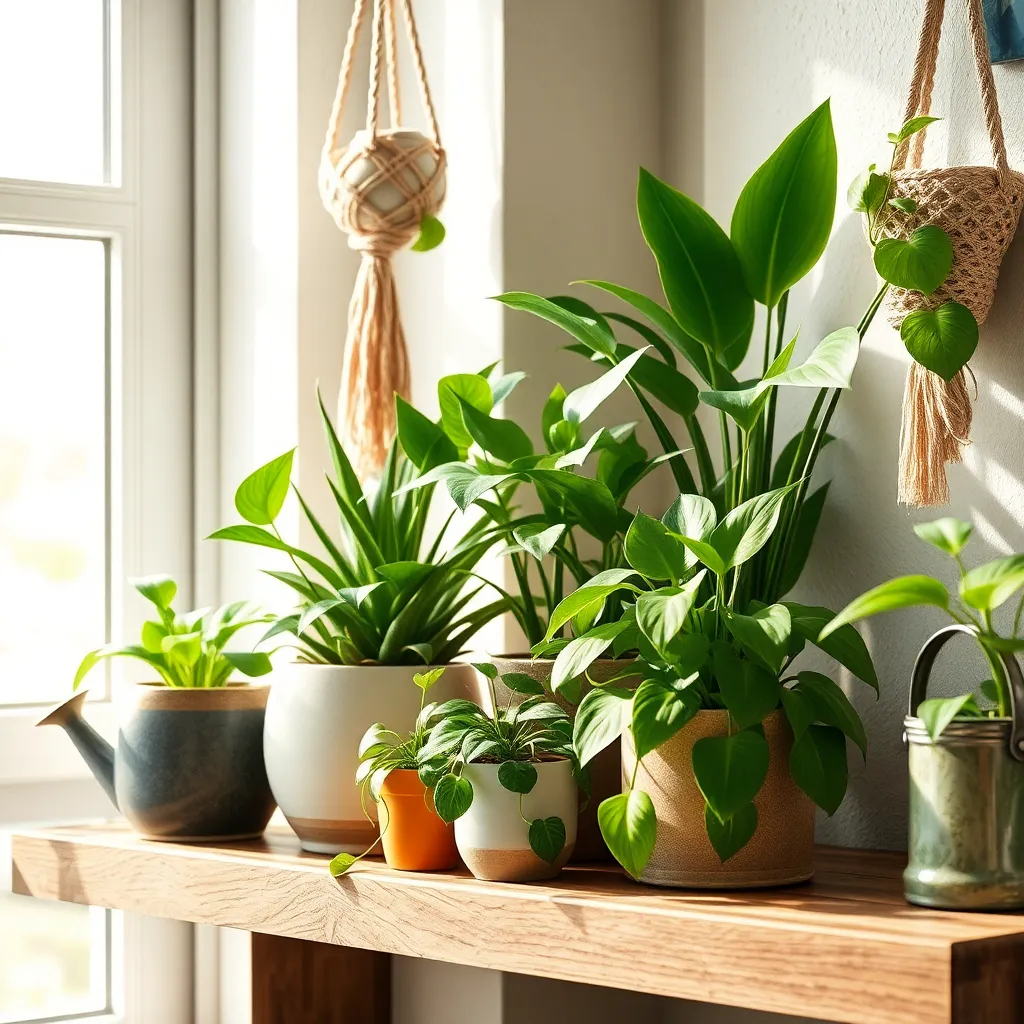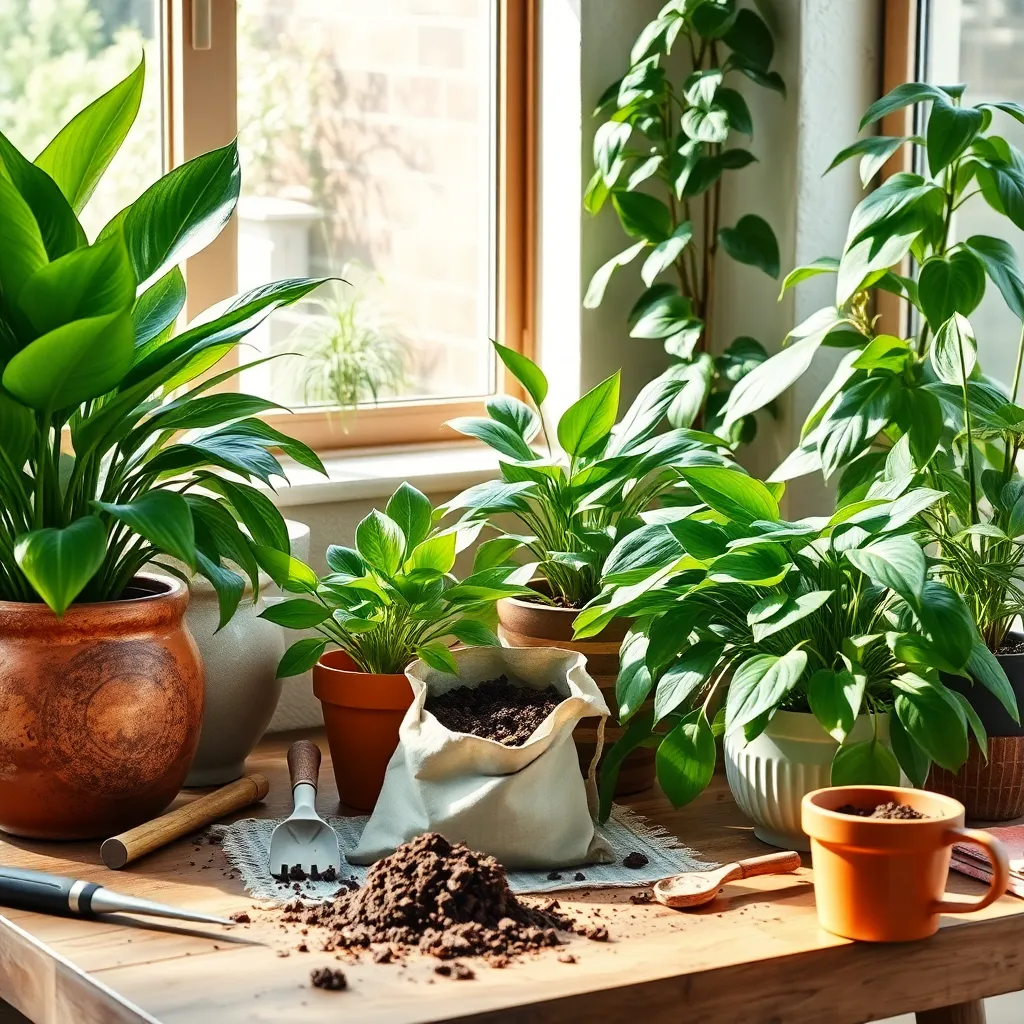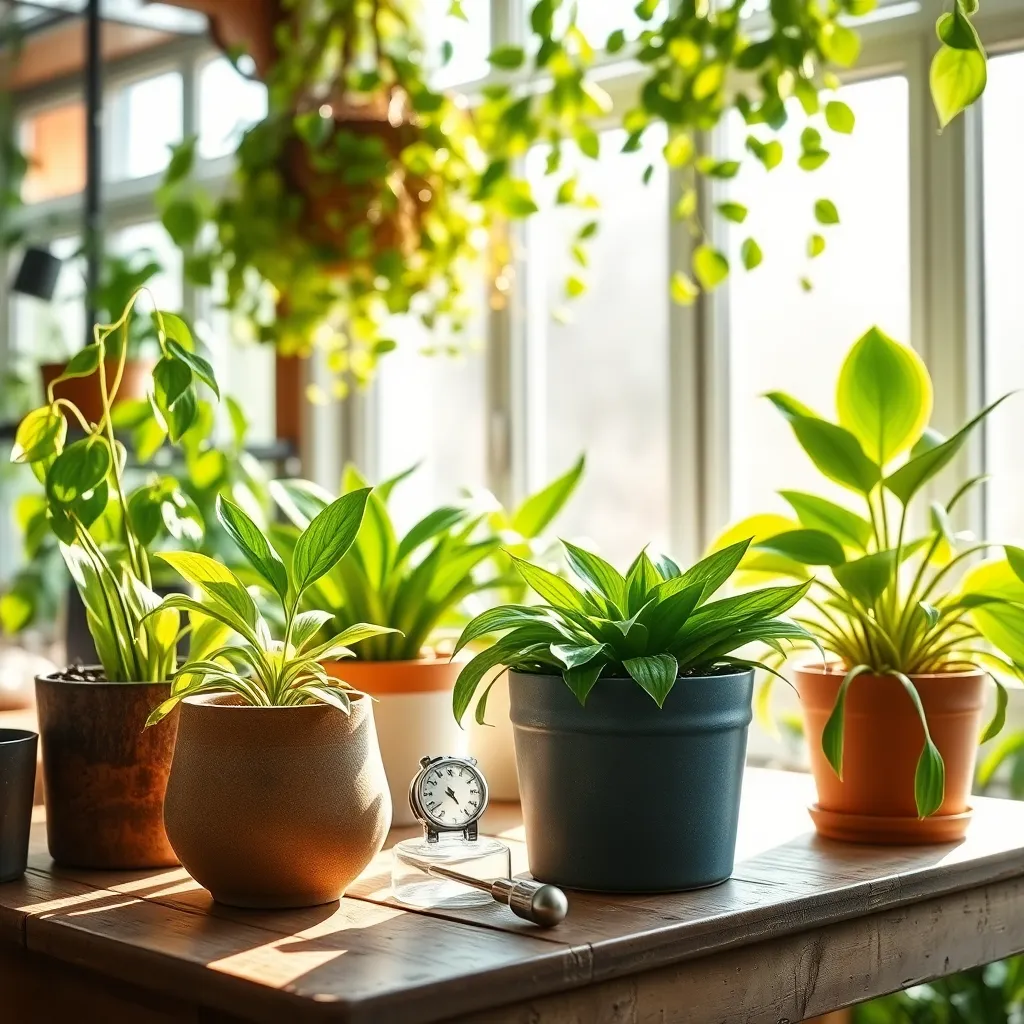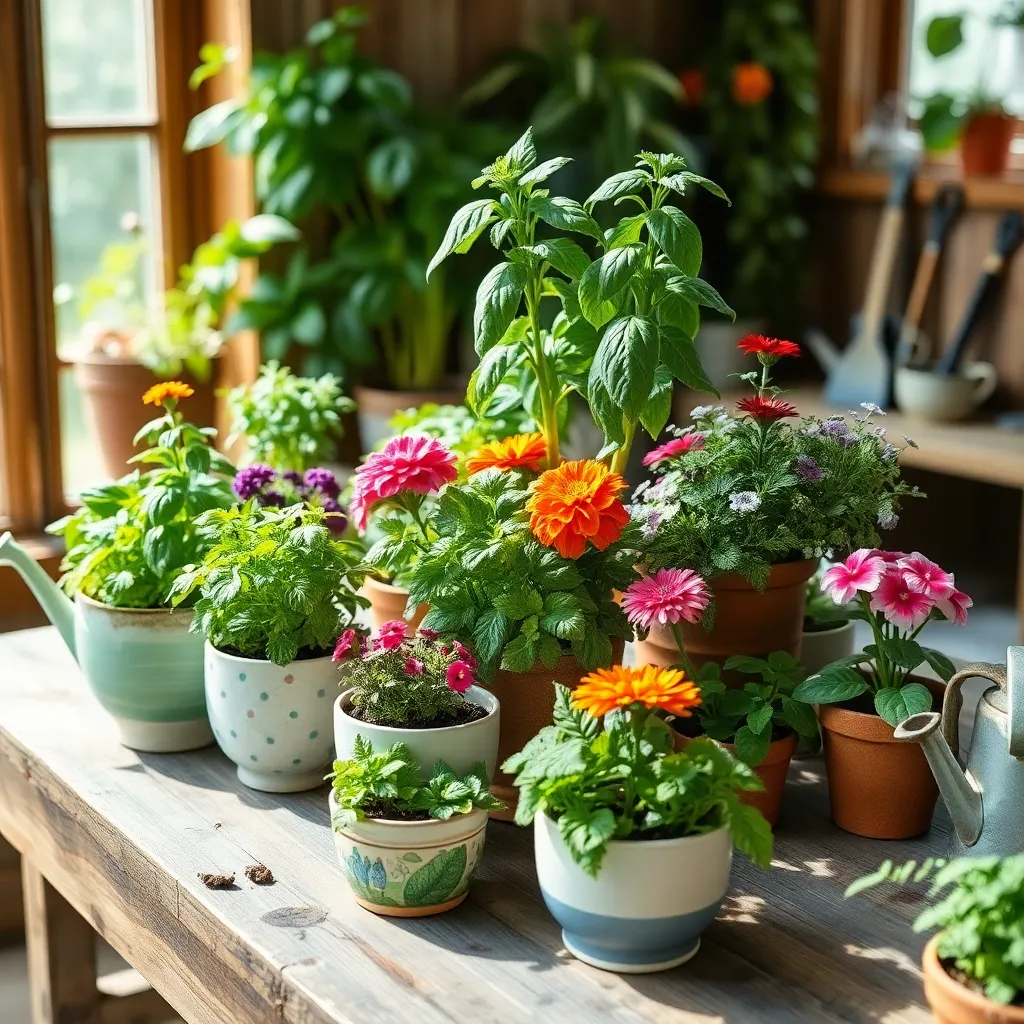Welcome to the vibrant world of indoor gardening, where even the smallest windowsill can become a lush oasis of green. Whether you’re a beginner eager to cultivate your first potted plants or an experienced gardener seeking new inspiration, this guide is brimming with simple, yet transformative ideas tailored just for you.
Here, you’ll discover that the joys of gardening aren’t confined to outdoor spaces. By exploring practical designs and techniques, you’ll not only beautify your home but also enhance your well-being and cultivate a sense of accomplishment.
These pages are filled with accessible, rewarding projects that promise to boost your confidence and nurture your passion. As you delve into each idea, you’ll find that successful indoor gardening is within reach, offering a daily dose of tranquility and joy right at your fingertips.
Choose Easy-Care Plant Varieties

Choosing the right plants can make your indoor gardening journey smooth and enjoyable. For beginners, consider starting with easy-care varieties such as pothos, snake plants, or peace lilies, which thrive in a range of light conditions and require minimal attention.
To ensure success, match each plant’s needs with your home’s environment. Most easy-care plants prefer indirect light, so placing them near a north or east-facing window can help them flourish.
Watering is a crucial aspect of plant care, but overwatering can be a common mistake. Allow the top inch of soil to dry out between waterings to prevent root rot and keep your plants healthy.
For advanced gardeners, consider experimenting with self-watering pots. These can help maintain a consistent moisture level, especially if you’re prone to forgetting to water or travel frequently.
Position Plants Near Natural Light

Placing your plants near natural light sources is crucial for their growth and health. Position them close to windows where they can receive ample sunlight, but be mindful of direct exposure which can sometimes be too harsh.
East-facing windows are ideal for most houseplants, as they provide gentle morning light. If your plants prefer more light, such as succulents or cacti, consider moving them to a south-facing window where they can bask in more intense sunlight.
For those with limited window access, using artificial grow lights can be an effective solution. These lights can supplement natural light and are particularly useful during the darker winter months when daylight is scarce.
Remember to rotate your plants regularly to ensure even light distribution on all sides. This practice helps prevent leggy growth and encourages a balanced, healthy plant structure.
Use Quality Potting Soil Mix

Using quality potting soil mix is crucial for successful indoor gardening. A well-chosen mix ensures that your plants receive the right balance of nutrients, water retention, and aeration needed for healthy growth.
Always look for a potting mix specifically labeled for indoor plants. These mixes are usually lighter and more aerated than garden soil, preventing root rot and ensuring proper drainage.
For beginners, a general-purpose potting mix is a great starting point. However, if you’re growing specific plants like succulents or orchids, consider using a cactus mix or orchid bark to meet their unique needs.
Remember to check the pH level of your potting mix. Most indoor plants thrive in slightly acidic to neutral soil (pH 6.0 to 7.0), so adjust accordingly with additives like lime or sulfur if needed.
Advanced gardeners might consider creating their own mix by combining peat moss, perlite, and vermiculite. This allows for customization based on the specific moisture and nutrient requirements of different plant species.
Finally, always re-pot your plants annually with fresh potting mix to replenish nutrients and maintain optimal plant health. This simple step can significantly extend the lifespan and vitality of your indoor garden.
Monitor Soil Moisture Regularly

Monitoring soil moisture is crucial for indoor gardening success. Too much or too little water can stress plants, leading to poor growth or disease.
To check soil moisture, insert your finger about an inch into the soil. If it feels dry at that depth, it’s time to water your plant.
Consider using a moisture meter for a more precise reading, especially if you’re caring for different types of plants. These devices provide accurate moisture levels and are simple to use, offering peace of mind for both beginners and seasoned gardeners.
Different plants have varying moisture needs, so it’s essential to understand the specific requirements of each. For example, succulents prefer drier conditions, while ferns thrive in consistently moist soil.
Consistent monitoring will help you learn the watering patterns of your plants. Over time, this practice will enhance your ability to maintain ideal growing conditions and promote healthy plant growth.
Start with Small Container Gardens

Starting with small container gardens is an excellent way for beginners to dip their toes into indoor gardening. These compact setups are perfect for learning the ropes without being overwhelmed by large-scale maintenance.
To begin, choose containers that have adequate drainage holes to prevent waterlogging, which can harm plant roots. Opt for a high-quality potting mix, as it’s designed to retain moisture while providing the necessary nutrients for your plants.
Pick easy-to-grow plants like herbs or succulents, which thrive in small spaces and require minimal care. Basil, mint, and thyme are excellent choices for a sunny windowsill, while succulents like jade or aloe vera can add a touch of green to any room.
Ensure your container garden is placed in an area with suitable light conditions, as light is crucial for photosynthesis and healthy growth. If natural light is limited, consider using LED grow lights to supplement the light needs of your plants.
Watering is a critical aspect of container gardening, and it’s important to strike a balance to avoid over- or under-watering. Check the soil moisture regularly and water only when the top inch of soil feels dry to the touch, ensuring your plants stay healthy and vibrant.
Conclusion: Growing Success with These Plants
In exploring the world of indoor gardening, we’ve uncovered five key relationship concepts that can nurture both your plants and personal connections. First, patience is crucial; just as plants take time to grow, so do strong relationships. Second, communication is vital; understanding the needs of your plants mirrors the importance of listening to your partner. Third, adaptability allows you to respond to changing conditions, whether in soil or in love. Fourth, shared goals, such as tending to a garden, can strengthen bonds. Lastly, nurturing and care are the foundation of both thriving gardens and relationships.
Now, take the first step toward nurturing your relationships by choosing a simple indoor plant project to embark on with your loved ones. As you do, observe how these principles apply to your personal connections.
Bookmark this article now, ensuring you have these gardening-inspired relationship insights at your fingertips. By integrating these concepts, you are not only cultivating a greener space but also laying the groundwork for flourishing relationships. Embrace this journey with an open heart, and watch as both your garden and your bonds grow in harmony and strength.
